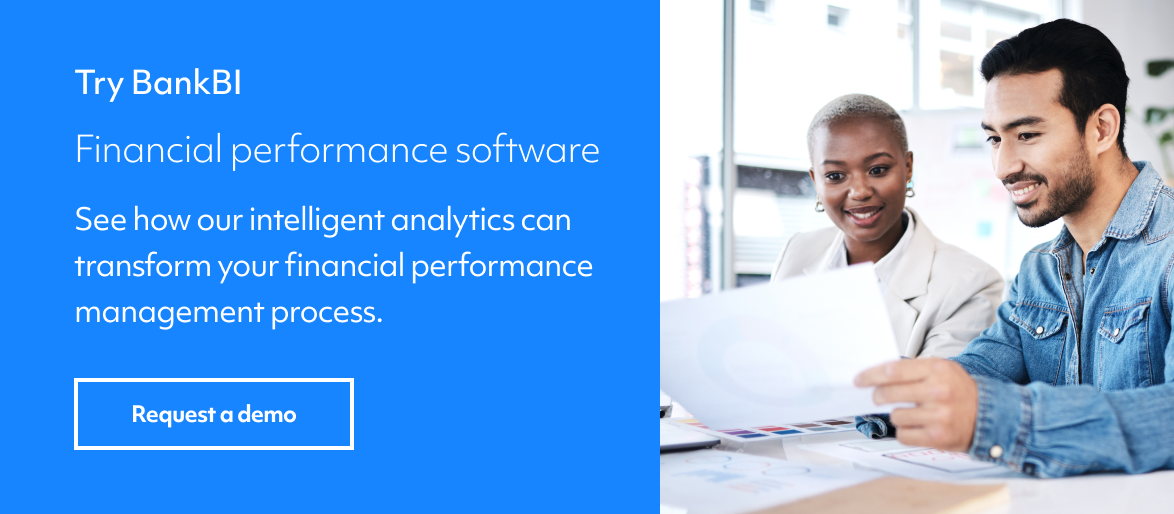We started BankBI in 2013 with a mission to help CFOs and their finance departments to automate the production of financial reports so that they can provide a great reporting service to their colleagues.
The Early Days
We went to market with our early product on Roambi Analytics which was a mobile analytics application for iPhone and iPad.
Whilst this technology got positive feedback from CFOs, we were told that we needed to build more of an automated financial reporting application, to combine general ledger data and core banking data, and help support the finance department, this was where the real issue was.
This was the missing piece for finance.
The Pivot to Financial Performance
Some banks and credit unions had both general ledger systems and core banking systems but were still struggling to reconcile the data from at least two different systems and produce financial reports & analytics, that told the story of their business, to the various stakeholders interested in financial performance.
This was enough information to enable us to pivot and embark on a journey to build the ultimate software application for finance departments in financial institutions.
We could combine the team’s decades of knowledge of core banking systems and how they operate and bring this to an underserved function, the finance department.
Satisfying Finance & Exceeding Their Expectations
Along the way, we’ve picked up various requirements and built them into our financial performance reporting application. We were told it should:
- Enable finance to go from month end report production to a daily reporting cadence to monitor daily movements in the balance sheet & income statement.
- Automate the production of all financial reports such as the balance sheet & income statement so that they did not have to be assembled manually.
- Enable finance to post month-end adjustments to figures;
- Enable finance to close month-end and publish board style reports to the board of directors.
- Enable finance to drill down into any financial ratio, balance sheet & income statement line using analytical tools.
- Combine the finance data of the balance sheet and profit & loss with the summarised core banking data from the branch network to reconcile and drill down into loans and deposits.
- Enable finance to operate independently of I.T to reduce dependencies and turnaround times.
- Automatically convert general ledger system trial balances into reports & analytics.
- Automatically convert raw loan, deposit & account data from the core banking system into banking analytics to provide the CEO & branch network with access to key product performance information.
- Ultimately, provide extra, more advanced analytics on top of what’s available from core banking & general ledger systems by unlocking and leveraging data from these underlying systems.
Making it Work Automatically
To enable anything to happen automatically we needed to work backwards from what our users wanted to see and how they wanted to interact with reports.
This involved starting with the templates of the reports, the columns and filters that should be applied and mapping out what data needed to be provided in each report.
We’d then go to the general ledger and core banking systems to find this data and map it into our banking data models.
This raised another issue, whilst we know where the data resides in our user’s core systems, we needed to find a way to help our finance users to transport the data, in its raw format, to our system so that we could then run the required business transformations and pump the data into our banking data models to power their reports and analytics.
This prompted us to come up with a standard file format for general ledger trial balance information and for core banking data such as loans, deposits, accounts, past due, money market, and customer segmentation data.
We then realised that not everyone would be able to provide the data exactly how we wanted to receive it, in the standard file formats, so we built data pipelines to transfer data from their existing raw trial balance and core banking data extracts into our standard file format for them.
In cases where this wasn’t enough, we could build our own or help our clients build their own extracts to enable them to transport the data to us.
Once we have extracts with the right data we provide users with a client-side upload agent where they can simply dump the files into a watched folder, in an automated way, every day, and our agent securely uploads these files to us where the data pipelines are kicked off, the banking models are populated, and the reports & analytics are refreshed.
Delivering Results Every Day
The result is that any CFO can walk into work each day, sit down at their desk and start interacting with their newly updated financial performance information.
Can’t wait to get to work? Log in at home whilst having breakfast or in a coffee shop on the morning coffee run, and the data is ready.
The important thing is that this provides new insights, every day.
No day is the same when new information is available daily.




